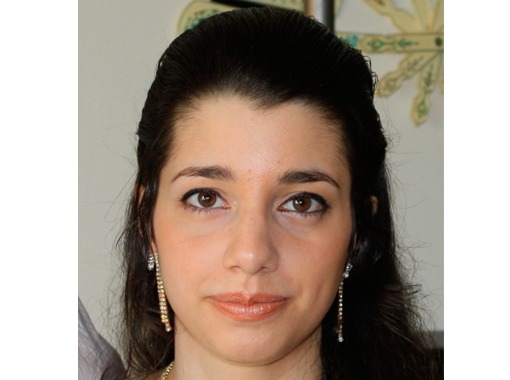Master's lecture in biochemistry -Lena Rós Jónsdóttir

VR-II
Stofa 157
Master's student: Lena Rós Jónsdóttir
Title: Synthesis of enantiostructured triacylglycerols possessing saturated fatty acid, polyunsaturated fatty acid and active drug
___________________________________________
Faculty: Faculty of Physical Sciences
Advisor: Guðmundur G. Haraldsson, Professor
Examiner: Benjamín Ragnar Sveinbjörnsson
Abstract
We became interested in preparing enantiostructured triacylglycerols (TAG) labeled with saturated fatty acids (SFA), omega-3 polyunsaturated fatty acids (n-3 PUFA) and a potent drug, where the benign effects of the n-3 PUFA, assumed benefits of structured and enantiostructured TAG, and the pharmaceutical properties of the drug are combined in a single molecule, offering an interesting and novel form of a prodrug. It is anticipated that a prodrug design of the type described may offer good opportunities to control site-specific release of the drug as a combination of the presence of the SFA, PUFA and drug within the TAG backbone, their location and a consequent timing of their release. It was also of interest to find out how the bioactive eicosapentaenoic acid (EPA) and docosahexaenoic acid (DHA), that are regarded to be anti-inflammatory prodrugs, will act by their own or some synchronic effects with the drug. An obvious choice of potent drugs for such prodrugs were the non-steroidal anti-inflammatory drugs (NSAID). A prerequisite is a carboxyl group to allow ester linkage to the glycerol framework and it was decided to base the work on (S)-ibuprofen and (S)-naproxen, the bioactive enantiomers of these drugs.
The current work describes synthesis of two types of such TAG prodrugs. First, a series of TAG molecules constituting the active drug in the sn-2 position of the glycerol framework along with a pure n-3 PUFA (EPA or DHA) located in one of the terminal positions (sn-1 or sn-3) and a pure SFA (6:0, 8:0, 10:0, 12:0, 14:0 or 16:0) in the remaining end-position (sn-3 or sn-1). These first category prodrugs may be divided into two subclasses, namely, those constituting the PUFA in the sn-1 position and the others constituting the PUFA in the sn-3 position of the glycerol backbone. The corresponding members of these subclasses are in fact diastereomers. In the second TAG prodrug type (second category) the drug is located in either of the sn-1 or sn-3 terminal positions, with the SFA in the remaining sn-3 or sn-1 position with the PUFA in the sn-2 position. As for the first category prodrugs the prodrugs belonging to second category may also be divided into two diastereomeric subclasses.
The TAG products belonging to the first category were synthesized by a six-step chemoenzymatic route starting from enantiopure (R)- or (S)-solketals. They were converted into the corresponding (S)- and (R)-1-O-benzylglycerols, respectively, in high yields that were subsequently acylated exclusively into the terminal position with the saturated fatty acids activated as vinyl esters by use of an immobilized Candida antarctica lipase in excellent yields. This was followed by introduction of the drugs into the 2-position of the glycerol moiety by use of EDAC coupling agent that also took place in very high to excellent yields. After deprotection of the benzyl protective group by catalytic hydrogenolysis the PUFA were subsequently introduced to the remaining end-position by a second coupling by use of EDAC. Both reactions took place in very high to excellent yields. This resulted in syntheses of a focused library of the total of 48 prodrug products that belong to the first category (24 of each subclass) and 60 intermediates (30 for each subclass) of excellent optical, chemical and enantiopurity that have been fully characterized.
The prodrug TAG products that belong to the second category were synthesized by a different six-step chemoenzymatic route that this time was comprised of two enzymatic steps. It was also based on the use of the solketals and 1-O-benzylglycerols described earlier. In the first enzymatic step the drugs activated as oxime esters were introduced by the Candida antarctica lipase to the sn-1 (or sn-3) position of the benzyl protected glycerol, highly regioselectively and in good yields. This was followed by deprotection of the benzyl protective group by catalytic hydrogenolysis and a subsequent acylation of the resulting monoacylglycerol exclusively into the remaining end-position with the SFA (6:0, 8:0, 10:0 and 12:0) activated as vinyl esters by the Candida antarctica lipase. In the final step EPA and DHA were introduced to the 2-position by chemical coupling by use of EDAC as before. This resulted in a focused library of 32 TAG prodrug products belonging to the second category (16 belonging to each subclass) and 24 intermediates (12 belonging to each subclass), also of excellent optical, chemical and enantiomeric purity, and fully characterized.
Lena Rós Jónsdóttir



